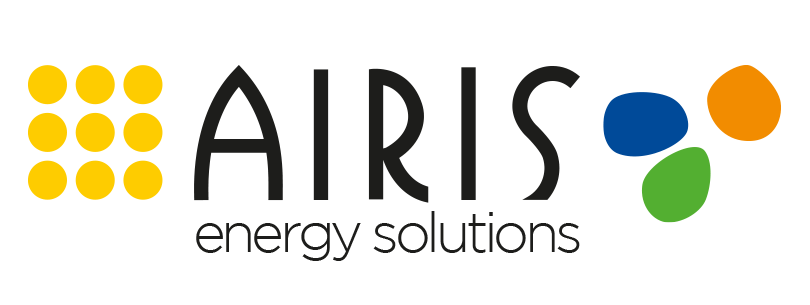Why LED lighting is so quickly becoming the norm
When it comes to technology, we are certainly used to seeing new innovations take hold, and then quickly replace the things we were using before should they offer something the older alternatives didn’t.
The flip phone was quickly replaced by the smartphone. VHS was quickly replaced by DVD, and then DVD began to dwindle in popularity as streaming services became more easily available to consumers.
The same thing is true when it comes to more domestic things, though the process is usually a little slower, as things we interact with in the home tend to be replaced less often than things like personal tech and media. Toilets with water saving flush features have become the norm for new toilet installations, for example, although many homes that haven’t replaced their bathroom suites in a number of years still don’t have them.
LED lighting has been around as an option for home use for quite some time now, but it is only really in the past five years that it has become the mainstream choice for lighting. Recently, GE, who were the main manufacturers of the older style of energy saving lightbulb, announced that they would be ceasing production of these older bulbs and focusing on LED. This is a big sign that LED is not only the future of home lighting but is rapidly becoming the present, too.
The main reason why this is only happening now is that the cost of LED light bulbs used to be considerably higher. Better manufacturing and the economies of scale that come into play when something goes mainstream have meant that LED bulbs for normal home use cost a fraction of what they used to and are only slightly more expensive than traditional bulbs. That extra cost is recouped very quickly due to the fact the bulbs cost less to run and last much, much longer.
So, now that these bulbs are within the range of affordability for most homes, consumers are choosing to switch to them when they need to replace a light. Moreover, a lot of consumers are choosing to replace all lighting inside and outside of their homes with LED, even if the lighting they currently have still worked just fine, due to all of the advantages LED has over older products such as compact fluorescent lighting or halogen bulbs.
Here are some of the advantages of switching to LED lighting:
Energy Efficiency
One of the most talked about draws for LED lighting is its energy efficiency. In an age where people are increasingly concerned with the environmental impact of the things they use in their homes, it is no surprise that a reduced carbon footprint alone is enough to drive many people to switch to LED. However, even for those who don’t list their carbon footprint as a priority in their purchasing decisions, LED’s vastly improved energy efficiency when compared to other means of lighting make it far cheaper to run, and so the reduced energy costs are another big selling point for consumers.
While the actual efficiency improvement you can get by switching to LED depends on a lot of factors, including the type of lighting you are switching from, how powerful the LEDs you need are, and what kind of energy tariff you are on, LED is the most energy efficient mode of lighting that is widely available and suitable for domestic use. This outperforms other types of bulbs that used to be dubbed ‘energy saving bulbs’.
Attractive Design Options
One of the things that prevented compact fluorescent bulbs from ever really becoming as widely used as their creators expected was that while they were more energy efficient than traditional bulbs, they also had cumbersome, ugly designs that meant that they didn’t lend themselves to a lot of design aesthetics where the bulbs are not hidden. LEDs, on the other hand, can be fashioned into just about any design you want, mimicking the look of traditional bulbs or forming spotlights, lighting tubes, and all kinds of other shapes and looks.
Additionally, LED can be made to generate light in whatever colour you want. In the past, if you wanted a coloured bulb, this was created by using coloured glass with a plain light filament inside. This would mean the light was fixed to one colour. LED can, however, be made to change colour, as well as change brightness. This is why so many ‘fun’ types of lighting like disco lights and Christmas lights have been made using LED technology for a long time, but you can also see a lot of other interesting applications of LED, such as colour changing shower lights used to give a luxurious experience in the bathroom.
Great Outdoor Lighting Potential
Outdoor lighting usually requires greater brightness, as well as fittings that are designed to withstand the elements. With LED, it is possible to create very bright outdoor lighting, including floodlighting and security lighting, which is still relatively cheap to run. The design options that come with LED technology also mean that outdoor lighting for more decorative purposes can be created with any kind of look you want.
Another benefit of LED for outdoor use is that it is low maintenance. This allows you to position your lights on parts of your house that can be a pain to reach. Eliminating the need to dash up a ladder every few months to replace a bulb. Some LED installations can last for decades of normal use before bulbs need to be changed.
Easy To Switch
Even with all of these advantages, people would still be reluctant to change to LED if this meant making major changes to all of their light fixtures and circuitry. In fact, you can simply install an LED light bulb into existing screw or bayonet light sockets without making any other changes, and if you do have an unusual lamp or light fitting, there is usually an inexpensive adaptor available that will allow you to install a normal LED bulb.
As with older light bulbs, you do have to be careful to find a bulb with the right size and style of fitting, but there is the same range available as with other types of bulb, so you don’t need to do anything more than shop for LED equivalents and switch them straight in!
There are a huge number of benefits to LED over other types of home lighting, including longer lasting bulbs, greater versatility for outdoor lighting, lower energy expenditure for the same brightness, and ease of making the switch. Since LED outperforms older types of lighting in just about every category you can judge a bulb on, it is the obvious choice when choosing new lights, and switching to LED for older lights is also a very good option in many cases.
If you are one of the many consumers who has been waiting for the prices of LED bulbs to decrease or for LED to become completely mainstream before updating your home to use it, then you should find that now is the time to take the plunge and start seeing the advantages of LED at home for yourself!






